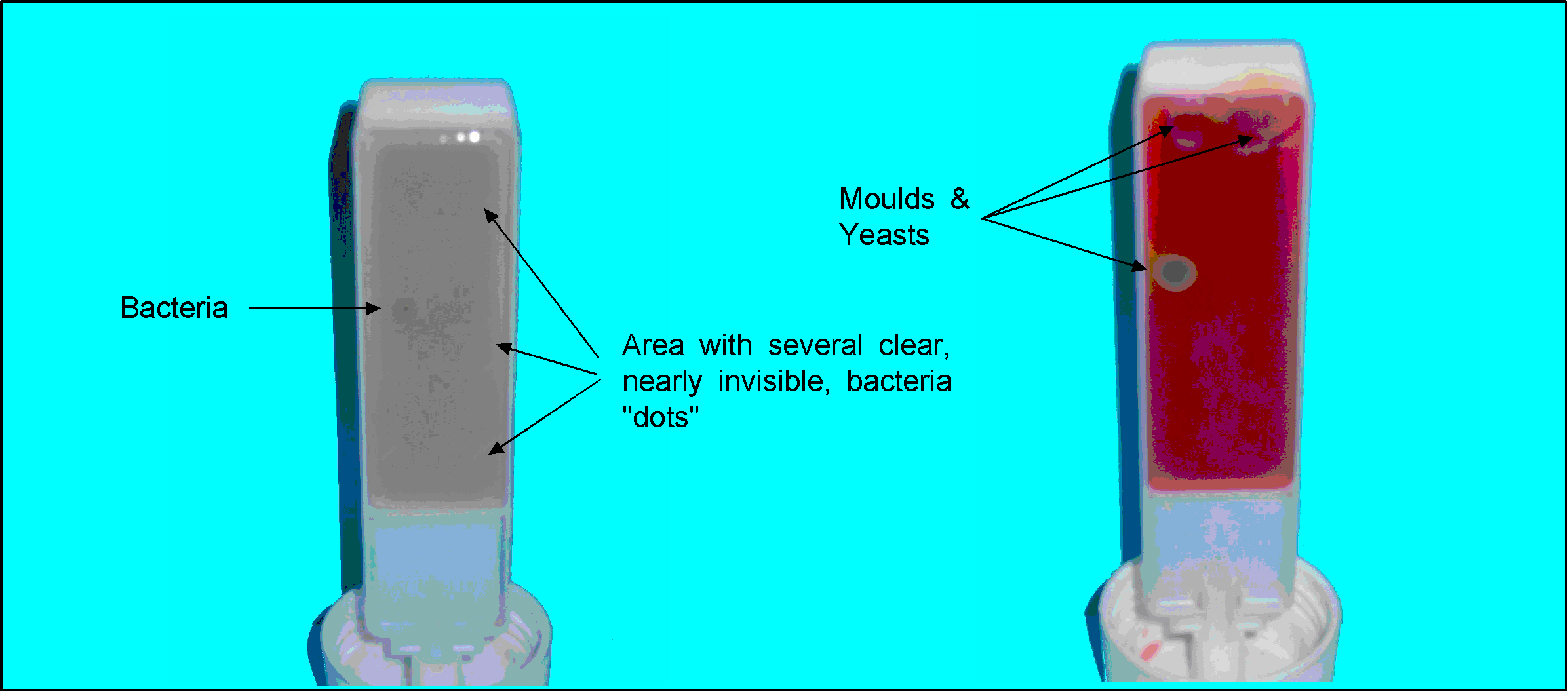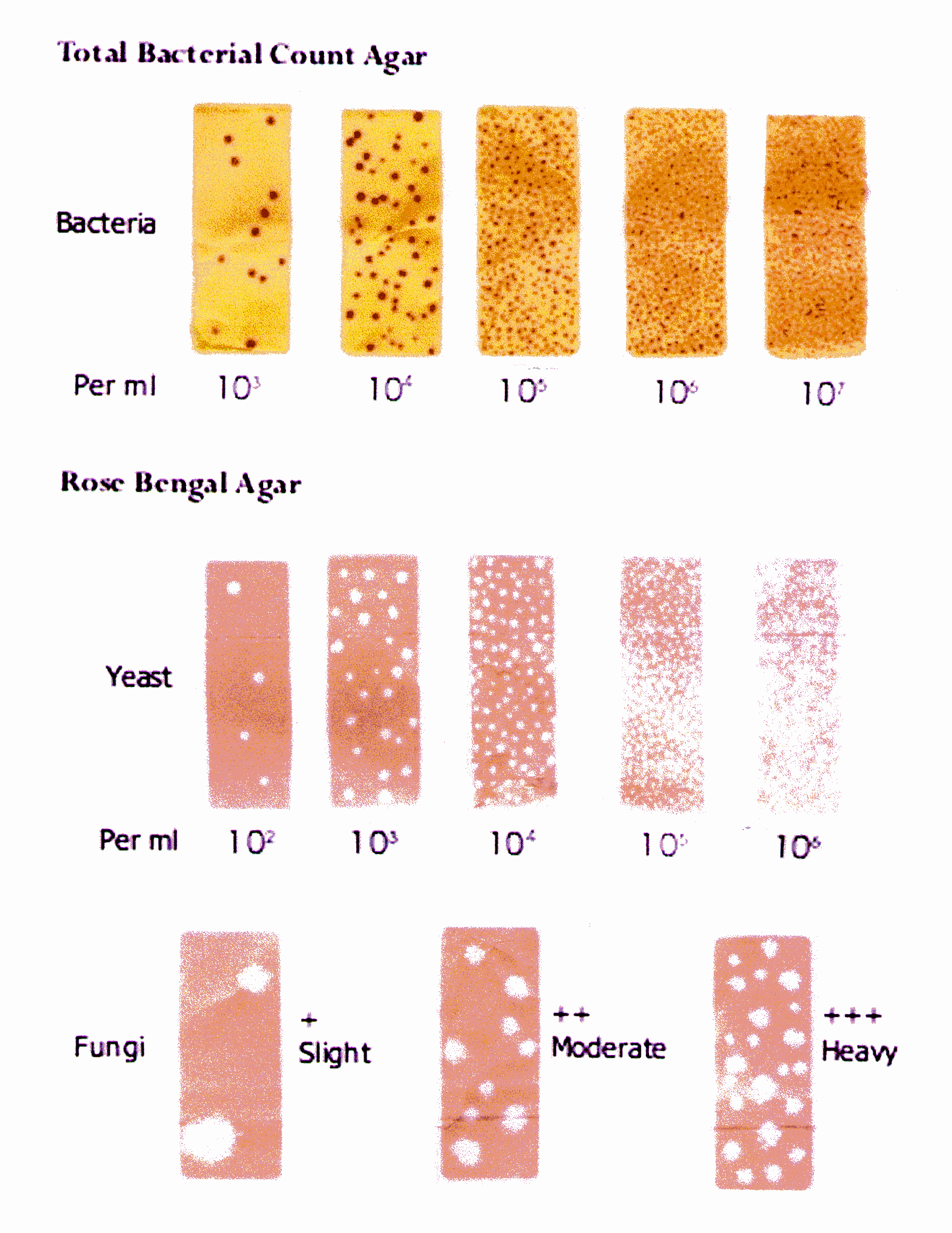Home Index
|
Home Index |
Review of Marine 16 Diesel Bug Test Kit
This review is based upon the instructions provided, conversations with the originator, a Marine 16 employee plus informal discussions with a university microbiologist.
At this time I must state that I am an engineer and thus look at things from an engineer’s perspective, others may well take a different view.
This kit costs £12.95 and consists of two plastic containers, one holding a small quantity of neutralising chemical to which you add your sample of fuel and the second contains a prepared test piece with two different gels. A simple instruction sheet, an illustrated interpretation sheet, "rubber gloves" and some background information on diesel fuel and diesel bug are also included.
The neutraliser is required to ensure that any additives already in the fuel do not cause a false result.
Before carrying out any sort of scientific experiment one should consider the expected result. I know all diesel fuel contains microbes etc. from the moment it leaves the oil refinery so I expected the test would show a presence of bug, however as I regularly use a water removing additive I also expected the amounts to be small.
The Testing
The test requires filling the first container to the top with either the water from the bottom of a water trap or fuel, fitting the cap and shaking it.
The first problem for many boaters would be from what point to take the sample. Even if an easily accessible point is available one may question the degree of contamination that could be introduced by trickling the sample over the external surfaces of a drain plug or banjo bolt. As an engineer I would also question the advisability of encouraging non-technical boaters to break into their fuel systems and possibly introduce air so the system requires bleeding before the engine will run.
Having taken the sample and shaken it the sample is allowed to stand for three minutes. The test piece is then dipped into the fuel. Any drip on the tip of the test piece is blotted on "clean absorbent paper". The test piece is returned to its container and then ideally placed in a steady 30 degrees C for up to 3 days to incubate. After 1 to 2 days one side gives the amount of bacteria present and after about 3 days the other side gives the amount of yeast and fungi present. If the incubation is done at room temperature the time periods are 2 to 4 days and 4 to 7 days respectively.

The number of "spots" on the test piece is then compared with the illustrations on the interpretation sheet to determine the degree of contamination.

The first thing I noted was that the coloured spots on my test piece differed from the illustrations. I got white, pink and grey on the yeast/fungi test and clear/very light grey on the Bacteria test. Some spots on the bacteria test were very difficult to see. The tests showed slight contamination, much as I expected.
The test piece should then be disposed of by burning or after first sterilising in bleach.
Concerns
My discussions revealed opportunities for contaminating the sample with "external" bugs, not least by the use of absorbent paper and sneezing. I note my single mould and one of the two yeast spots were located right at the bottom of the test piece, very close to the "blotting" point.
There is a statement in the paper work to the effect that if the temperature of the fuel is substantially different from the incubation temperature a false low result may be obtained so the incubation must then be done at the fuel temperature.
As an engineer I am not happy that the associated fuel additive only appears to be a biocide. I am far more concerned about the damage that water will do to the fuel system. The additive package I saw at the boatshow was said to be enough to treat over 400 gallons with no scale to help with lesser capacities. This may be just what the RNLI require, but it does not make it easy for the inland boater. If I decided to act on the results of the test I think I would be looking for a product that would also remove water as well as having an easy to use dosing scale. However it must be said that over dosing is unlikely to do any harm, but there may be a question about the products of combustion on the environment.
If the results caused a boater with heavily contaminated fuel to use the biocide I have concerns over how long it would be before the fuel filter blocked with dead bugs. A warning about this effect would not go amiss.
Although I was very pleasantly surprised by the honesty in both the documents and conversations, I felt that inland leisure boating circumstances were not particularly well understood. The small degree of "technical spin" that was apparent only caused me irritation rather than scepticism. I wish all companies trying to sell to the boating fraternity followed the same marketing strategy.
Conclusions
I must conclude that this product cultures the contamination, but how accurate the results will be under a "boater’s" test conditions I would not like to say. I am sure any errors would be such that they failed safe – that is indicating the need for additive use when perhaps none was needed.
This product may be a help to any user with very large fuel tanks and low consumption, especially if the tank regularly got warm or the boat is operating in high ambient temperatures. A hire fleet may well find value in testing their bulk tank at the start of the season and it may also be of value in testing the fuel in a boat that has been out of commission for several years. However I am not convinced that it provides value for a typical inland boater.
I would rather spend the £12.95 on a water removing additive and inspect my fuel filters for early signs of contamination whilst servicing. (Note to cruiser owners – it is almost impossible to drain the water from the lowest point of most steel narrowboat tanks – thus the use of an additive). Simple things like only buying fuel from obviously "high volume" outlets that have a vested interest in supplying fuel with a minimal water content go a long way to minimising problems. Hire fleets spring to mind.
|
Home Index |